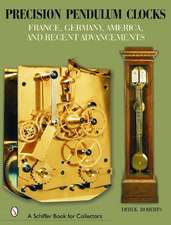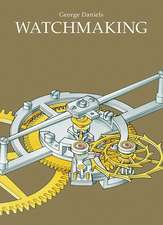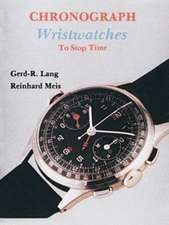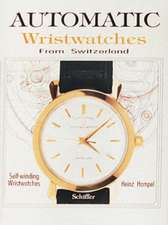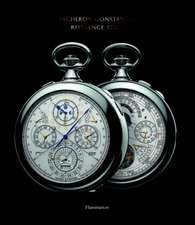Optical Response of Nanostructures: Microscopic Nonlocal Theory: Springer Series in Solid-State Sciences, cartea 139
Autor Kikuo Choen Limba Engleză Paperback – dec 2010
| Toate formatele și edițiile | Preț | Express |
|---|---|---|
| Paperback (1) | 691.59 lei 6-8 săpt. | |
| Springer Berlin, Heidelberg – dec 2010 | 691.59 lei 6-8 săpt. | |
| Hardback (1) | 639.59 lei 6-8 săpt. | |
| Springer Berlin, Heidelberg – 23 apr 2003 | 639.59 lei 6-8 săpt. |
Din seria Springer Series in Solid-State Sciences
- 18%
 Preț: 1225.94 lei
Preț: 1225.94 lei - 18%
 Preț: 1017.62 lei
Preț: 1017.62 lei - 15%
 Preț: 532.05 lei
Preț: 532.05 lei - 18%
 Preț: 944.51 lei
Preț: 944.51 lei -
 Preț: 541.47 lei
Preț: 541.47 lei - 18%
 Preț: 956.96 lei
Preț: 956.96 lei -
 Preț: 385.84 lei
Preț: 385.84 lei - 18%
 Preț: 1827.48 lei
Preț: 1827.48 lei - 15%
 Preț: 661.02 lei
Preț: 661.02 lei -
 Preț: 389.88 lei
Preț: 389.88 lei - 15%
 Preț: 639.59 lei
Preț: 639.59 lei - 15%
 Preț: 635.15 lei
Preț: 635.15 lei - 18%
 Preț: 896.21 lei
Preț: 896.21 lei - 15%
 Preț: 647.92 lei
Preț: 647.92 lei - 15%
 Preț: 651.34 lei
Preț: 651.34 lei - 18%
 Preț: 890.23 lei
Preț: 890.23 lei - 15%
 Preț: 640.55 lei
Preț: 640.55 lei - 15%
 Preț: 649.54 lei
Preț: 649.54 lei - 15%
 Preț: 645.60 lei
Preț: 645.60 lei - 15%
 Preț: 644.30 lei
Preț: 644.30 lei - 15%
 Preț: 653.79 lei
Preț: 653.79 lei - 18%
 Preț: 956.69 lei
Preț: 956.69 lei - 15%
 Preț: 637.59 lei
Preț: 637.59 lei - 23%
 Preț: 1043.42 lei
Preț: 1043.42 lei - 15%
 Preț: 639.08 lei
Preț: 639.08 lei - 15%
 Preț: 648.24 lei
Preț: 648.24 lei - 15%
 Preț: 637.46 lei
Preț: 637.46 lei - 15%
 Preț: 640.06 lei
Preț: 640.06 lei -
 Preț: 391.40 lei
Preț: 391.40 lei -
 Preț: 390.84 lei
Preț: 390.84 lei - 15%
 Preț: 638.57 lei
Preț: 638.57 lei - 18%
 Preț: 1006.06 lei
Preț: 1006.06 lei - 18%
 Preț: 730.79 lei
Preț: 730.79 lei - 15%
 Preț: 640.37 lei
Preț: 640.37 lei - 15%
 Preț: 643.65 lei
Preț: 643.65 lei - 18%
 Preț: 1231.01 lei
Preț: 1231.01 lei - 18%
 Preț: 950.21 lei
Preț: 950.21 lei - 15%
 Preț: 642.68 lei
Preț: 642.68 lei - 15%
 Preț: 640.55 lei
Preț: 640.55 lei - 18%
 Preț: 1229.10 lei
Preț: 1229.10 lei
Preț: 691.59 lei
Preț vechi: 813.63 lei
-15% Nou
Puncte Express: 1037
Preț estimativ în valută:
132.34€ • 141.51$ • 110.34£
132.34€ • 141.51$ • 110.34£
Carte tipărită la comandă
Livrare economică 18 aprilie-02 mai
Preluare comenzi: 021 569.72.76
Specificații
ISBN-13: 9783642055782
ISBN-10: 3642055788
Pagini: 188
Ilustrații: IX, 174 p.
Dimensiuni: 155 x 235 x 10 mm
Greutate: 0.27 kg
Ediția:Softcover reprint of hardcover 1st ed. 2003
Editura: Springer Berlin, Heidelberg
Colecția Springer
Seria Springer Series in Solid-State Sciences
Locul publicării:Berlin, Heidelberg, Germany
ISBN-10: 3642055788
Pagini: 188
Ilustrații: IX, 174 p.
Dimensiuni: 155 x 235 x 10 mm
Greutate: 0.27 kg
Ediția:Softcover reprint of hardcover 1st ed. 2003
Editura: Springer Berlin, Heidelberg
Colecția Springer
Seria Springer Series in Solid-State Sciences
Locul publicării:Berlin, Heidelberg, Germany
Public țintă
ResearchCuprins
1. Introduction.- 2. Formulation of Nonlocal Response Theory.- 3. Some General Features of Nonlocal Response Theory.- 4. Application: Linear Response.- 5. Application: Nonlinear Response.- References.
Recenzii
From the reviews:
"This is a densely written book, covering a wide range of topics related to the interactions between light and matter using ‘a new semiclassical theory from the microscopic nonlocal point of view’. … I liked the book. It has given me a new insight to some of the problems it deals with. … This book would be good for researchers and would be a useful addition to many scientific libraries." (A D Greentree, The Physicist, Vol. 41 (1), 2003)
"This is a densely written book, covering a wide range of topics related to the interactions between light and matter using ‘a new semiclassical theory from the microscopic nonlocal point of view’. … I liked the book. It has given me a new insight to some of the problems it deals with. … This book would be good for researchers and would be a useful addition to many scientific libraries." (A D Greentree, The Physicist, Vol. 41 (1), 2003)
Textul de pe ultima copertă
This book gives a theoretical description of linear and nonlinear optical responses of matter with special emphasis on the microscopic and "nonlocal" nature of resonant response. The response field and induced polarization are determined self-consistently in terms of simultaneous linear or nonlinear polynomial equations. This scheme is a general one with its position between QED and macroscopic response theory, but is most appropriate for determining the dependence of optical signals on the size, shape, and internal structure of a nanostructure sample. As a highlight of the scheme, the multi-resonant enhancement of the DFWM signal is described together with its experimental verification.
Caracteristici
Deals with frontier research in response theory Should encounter great interest among the scientists involved in these studies Will have tremendous influence on modern device techniques Includes supplementary material: sn.pub/extras



